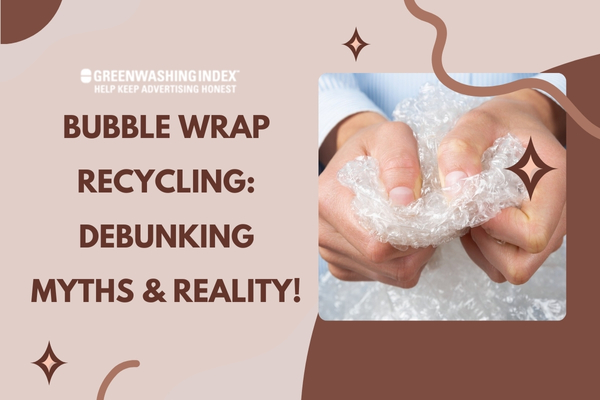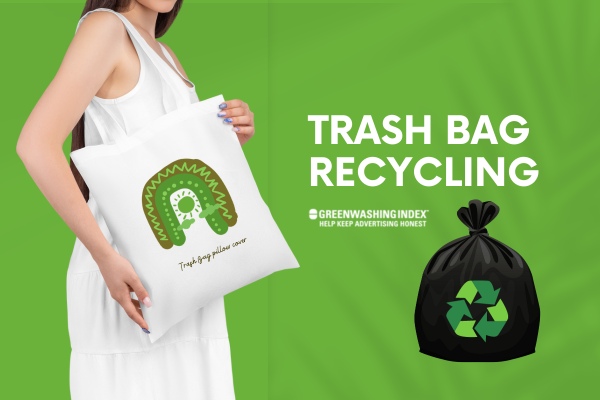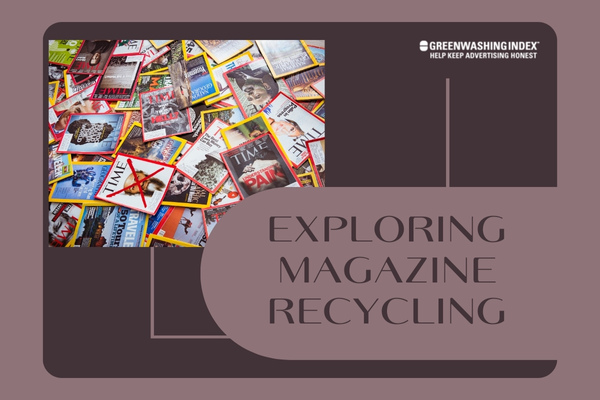Have you ever popped the little bubbles in bubble wrap and thought about what would happen next? As easy as it is to pop those bubbles, it’s not always as simple when it comes to bubble wrap recycling. Many of us don’t quite know the truth behind its journey from protection to recycling.
So, let’s dive into the real story behind this common packaging material and uncover if your bubble wrap tossing habits are helping or hurting our planet.
Are you using bubble wrap the right way to help our Earth stay green? You might think that popping those air-filled pockets is the end of the line, but there’s more to it than just throwing them out with your regular trash.
The truth about bubble wrap recycling is that while yes, they can indeed be recycled, there are proper ways to go about it so they don’t just end up in a landfill. It involves taking a closer look at our recycling habits and making some simple yet impactful changes.
Discover What’s Inside:
- The straightforward scoop on bubble wrap recycling.
- Truth vs. myths in everyday recycling practices.
- Easy tips for eco-friendly packaging choices.
- Innovations are leading us toward greener futures.
What Is Bubble Wrap and Why Is It Everywhere?
Bubble wrap is a type of plastic packing material. It’s made up of small air bubbles, which help keep items safe while they are being moved or shipped. If you’ve ever gotten a package in the mail, chances are it had bubble wrap inside.
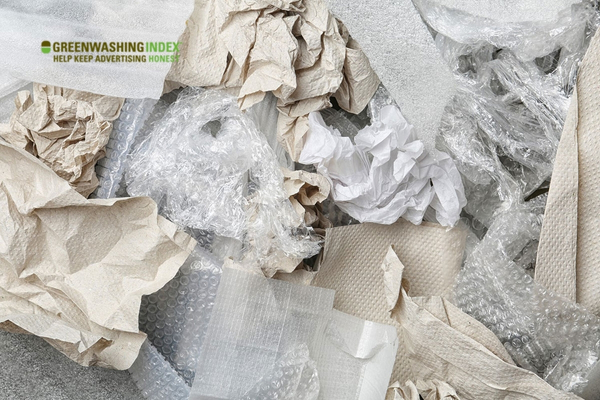
This stuff is everywhere! From protecting electronics to keeping glass from breaking, bubble wrap does an important job.
But there’s a problem: bubble wrap is also made of plastic, and we all know too much plastic can hurt our planet. That’s why bubble wrap recycling is so important. When we recycle bubble wrap, we help take care of the Earth. Every little bit that gets recycled means less new plastic has to be made.
Recycling bubble wrap makes sure it doesn’t end up hurting wildlife or clogging up landfills – places where trash goes when there’s no more room for it anywhere else. By recycling this packaging material, we do our part for the planet.
How Is Bubble Wrap Recycled?
Let me tell you step by step how bubble wrap recycling works:
- Collection: First off, people gather used bubble wrap instead of throwing it away.
- Cleaning: Next, someone cleans it well so that there’s no dirt or any other things stuck to the bubbles.
- Sorting: Then comes sorting! Workers at recycling places sort out different types of plastics because not all plastics are the same.
- Shredding: After sorting comes shredding — they cut up the bubble wrap into little pieces.
- Melting: Those shredded bits get very hot until they turn into liquid plastic again.
- Forming New Products: Finally, that melted plastic is molded into something new – maybe even more packing materials!
When these steps are followed carefully and correctly, bubble wrap gets another chance at life instead of hurting nature.
So what can you do? Look around for where you can take your used bubble wrap for recycling in your area – some stores take them back; sometimes, local recycling centers will accept them, too.
Remember: next time you pop those bubbles (and I know it’s fun), think about where that bubble wrap could go next after serving its purpose with your package — toward a new beginning through recycling!
Also Read: How to Start a Compost Pile: A Beginner’s Guide
Common Misconceptions About Recycling Bubble Wrap
I’ve come across many myths about recycling bubble wrap. Let me set some of these straight:
- Myth 1: You can recycle bubble wrap just like any other plastic.
The truth is, while bubble wrap is made of plastic, it’s not the same kind as your everyday bottles and containers. It often requires specialized processing. - Myth 2: All curbside programs accept bubble wrap for recycling.
Incorrect! Many local curbside programs don’t accept bubble wrap because it can clog up machinery. It’s crucial to check with your local services first. - Myth 3: Bubble wrap is bad for the environment, no matter what.
This isn’t entirely true either. If recycled right or reused several times before disposal, its environmental impact is lessened.
So you see, there’s a bit more to the story than most folks know when it comes to eco-friendly packaging and specifically bubble wrap recycling.
Roadblocks in Recycling Facilities
Now let me dive into some problems recycling centers face with this material:
- Sorting Difficulties
- First off, sorting machines can have a tough time handling lightweight items like bubble wrap.
- They can get tangled in equipment.
- Sorting staff sometimes requires removing them by hand, which takes time and effort.
- Low Market Demand
- Another big issue is that even if a center sorts out, the bubble wraps correctly:
- There might not be much market demand for recycled plastic film materials like what makes up most wraps.
Also Read: Wrapping Paper Recycling: Essential Tips for Green Living
Steps to Improve Bubble Wrap Recycling Rates
As someone who cares about our environment, I’m always looking for ways to do better, especially when it comes to recycling. Bubble wrap – that stuff we use to pack fragile things – has its own set of rules for recycling. We can all do our part in improving bubble wrap recycling rates by following some simple steps:
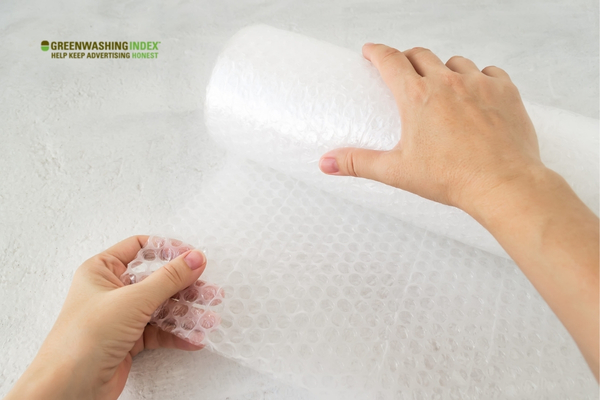
Do’s and Don’ts for Consumers
Here’s a list of what you should and shouldn’t do when it comes to recycling bubble wrap:
Do:
- Check with your local recycling program: Not all places have the same rules, so find out if your community accepts bubble wrap in curbside bins.
- Drop off at collection points if needed: Some grocery stores or shipping centers have special bins where you can leave your bubble wrap.
- Clean it first: Make sure the bubble wrap is free from tape and stickers. It should also be dry because wet materials can spoil other recyclables.
- Reuse when possible: Before you think about recycling, see if you can use the bubble wrap again.
Don’t:
- Don’t mix with other items: Keep bubble wrap separate from other types of plastics or trash. Mixing them up could make the whole batch unusable.
- Never place it in curbside bins without confirmation: If your local program doesn’t accept it, putting it in your bin can mess up the machinery at sorting facilities.
- Avoid tossing dirty or wet bubble wrap into recycle bins: Contaminants can ruin the quality of recycled material.
By sticking to these guidelines, we help ensure that our efforts towards eco-friendly packaging don’t go to waste.
Innovations in Eco-Friendly Packaging Alternatives
Now let’s talk about how smart minds are working on ways to not even need traditional plastic-based bubbles. This is where innovations come into play:
Biodegradable alternatives:
Some companies are making “bubbles” out of materials that break down naturally over time without harming the environment.
Plant-based packaging:
Imagine wrapping made from cornstarch or mushroom roots! These sustainable shipping materials come from renewable sources, and they reduce overall environmental impact.
Inflatable air pillows made on-demand:
These require less space than pre-inflated bubbles and are often made with better-for-the-environment materials. Plus, businesses only inflate what they need, cutting down on waste.
By exploring new ideas for packaging that fit into a sustainable lifestyle, we’re doing more than just disposing of it rightly; we’re shifting towards using materials that are kinder to our planet right from the start. That’s an exciting step forward in taking care of Earth!
Also Read: Tissue Paper Recycling: Yes or No? Find Out Now!
The Future Landscape of Packaging Material Recycling
When I think about the future and recycling, it’s clear things are changing. Bubble wrap, you know, that poppable, fun plastic we use to protect stuff? Well, it’s got a recycling problem. But don’t worry – the world of science is on it! People are working hard to make new materials that protect just as well but are kinder to our planet.
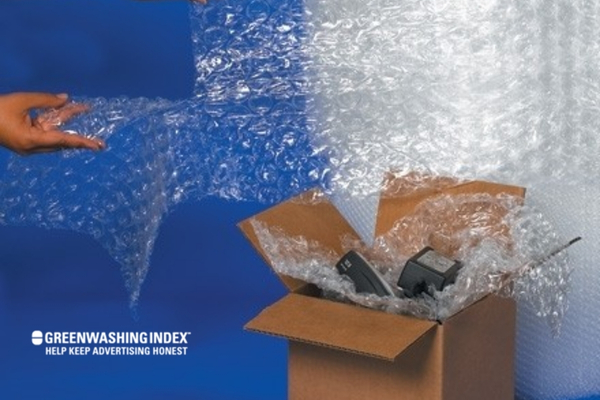
Advancements in Materials Science
Scientists everywhere are experimenting with cool new ways to keep things safe without hurting nature. One big idea is making materials that can break down easily once we’re done with them.
Instead of bubble wrap made from plastics that stay around for ages, they’re inventing bubble wrap from plants and other natural stuff. These new wraps could break down in compost heaps or even in your backyard!
Another smart invention is protective wraps that we can melt away with just water after we use them. Imagine wrapping your delicate items with something like the usual bubble wrap, but when you’re done, you just wash it away safely down the sink!
All these advancements mean pretty soon, we won’t have to deal with old-fashioned plastic bubble wrap and its recycling troubles anymore. We could have safe shipping without a bunch of waste – how cool is that?
Policies Shaping Bubble Wrap Recycling Efforts
Governments and companies aren’t sitting back either; they’re getting things moving with different rules:
- Ban on Non-Recyclable Plastics: Some places say goodbye to certain plastics that can’t be recycled easily – like some types of bubble wrap.
- Encourage Use of Recycled Materials: Businesses might get a thumbs up or even help in terms of money if they pick recycled stuff over brand-new materials.
- Educate Consumers: Labels might start telling us how eco-friendly packaging is so we can choose better options while shopping.
- Improve Recycling Systems: Make it easier for everyone to recycle their packaging by setting up more places where folks can drop off their used wraps.
By changing how things work little by little, soon, our packages will come wrapped in material that doesn’t hang around harming Earth long after they’ve served their purpose.
There’s no doubt about it: when I think about what’s coming ahead for packaging materials and recycling efforts like these for bubble wrap – I get pretty excited! It lets me know our world could be full of smarter solutions to keeping both our goods and nature safer – isn’t progress amazing?
Also Read: Paint Recycling: The Ultimate Guide to Responsible Disposal
Making Responsible Choices with Packaging
When I think about the world around us, it’s clear that packaging plays a huge part in our daily lives. Whether shopping online or at local stores, we often see items wrapped in layers of bubble wrap to keep them safe.
But what happens after we unwrap our goodies? The bubble wrap usually ends up tossed aside. As an individual who cares about the planet, I’ve learned to look for better options and encourage others to do the same.
Here are some ways we can choose wisely when it comes to packaging:
- Go for Alternatives: Instead of using traditional bubble wrap, look for boxes stuffed with recycled paper or biodegradable packing peanuts.
- Reuse What You Have: If you receive a package with bubble wrap, keep it! It can come in handy next time you need to send something fragile.
- Ask for Eco-friendly Options: When shopping online, check if the seller offers sustainable packaging materials like recycled cardboard or corrugated bubble wrap—a greener version of the usual stuff.
- Spread Awareness: Tell your friends and family about why eco-friendly packaging matters. The more people ask for it, the more likely businesses will listen and change their ways.
- Recycle Right: Find out how your local community handles bubble wrap recycling and follow their guidelines closely.
By making these small changes, each one of us can make a big difference in reducing waste from non-recyclable materials.
The Business Case for Embracing Recyclable Materials
Businesses today face a unique challenge: they must find a balance between protecting their products during shipping and being mindful of their environmental impact. The good news is that by integrating recyclable materials into their operations—like environmentally friendly versions of bubble wrap—not only do they contribute positively to our planet but also boost their brand image.
Let’s dive into why businesses should adopt sustainable shipping materials:
- Customer Preference: A growing number of consumers prefer buying from companies that use eco-friendly practices, including sustainable packaging.
- Cost Savings over Time: While there might be an upfront cost when switching to environmentally responsible materials, businesses can save money in the long run through reduced waste disposal fees and recycling incentives.
- Brand Reputation: Being seen as an environmentally conscious company is invaluable today; it builds trust with customers who value corporate responsibility.
- Regulatory Compliance: More regions are imposing stricter regulations on waste and recycling practices—using recyclable packaging can help avoid potential fines.
- Innovation Opportunities: Switching to green alternatives opens doors for innovation in product design and supply chain logistics.
Taking steps toward utilizing more recyclable content like eco-friendly bubble wrap shows that a business is serious about sustainability—and customers notice this commitment, too!
Switching from conventional packing solutions may seem daunting at first glance, but considering all these benefits demonstrates how impactful such changes could be—not just for our environment but also for business success itself!
Also Read: Old Electronics Disposal: Ultimate Recycling Tips Guide
Conclusion
Wrapping up, the journey of bubble wrap recycling is no mere pop in the pan. It’s a serious environmental endeavor that highlights our commitment to sustainability.
Though the challenges are there, with firm steps from us all, we can work towards a future where every little piece of bubble wrap finds a new purpose instead of littering our planet. Let’s keep pushing for better recycling habits and supporting eco-friendly packaging innovations.

